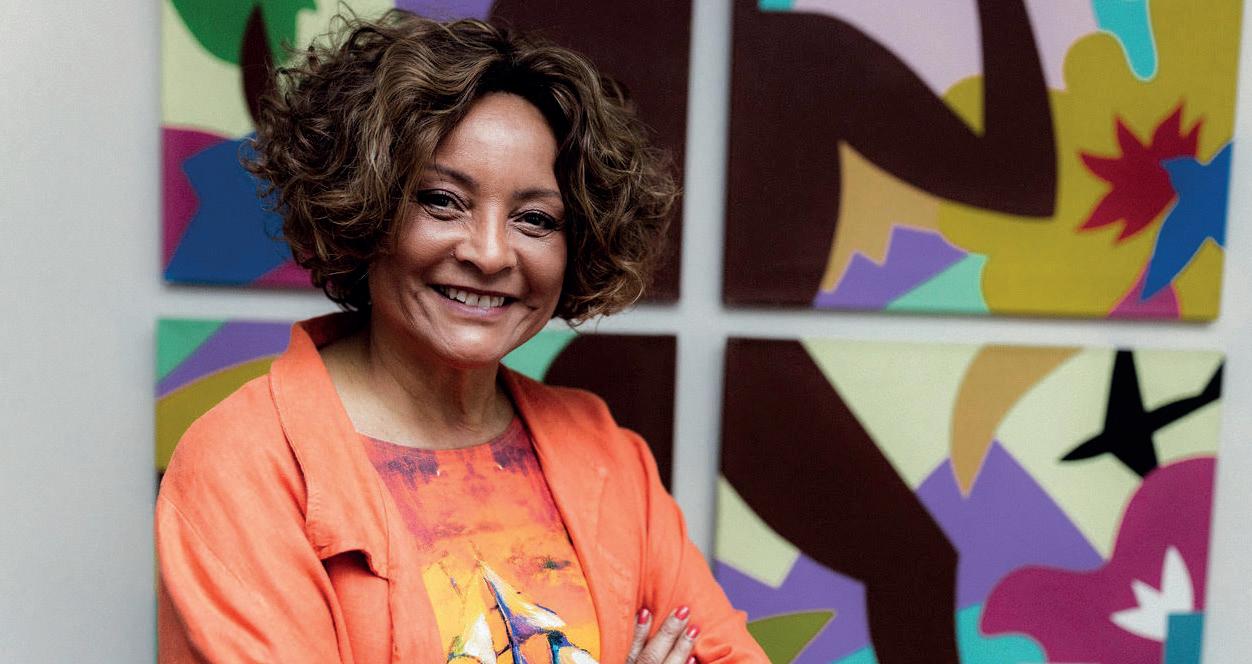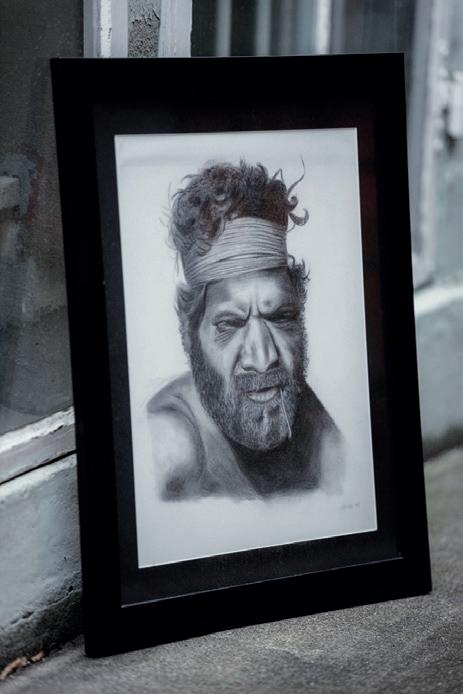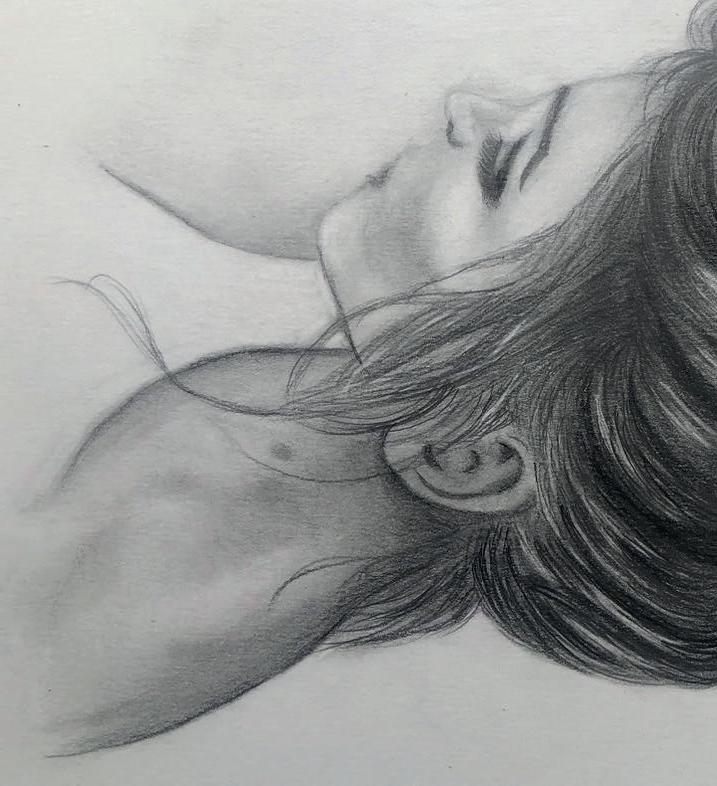
6 minute read
Life—and the twists and turns that come with it—is the gold thread that runs through Marione’s work.
the art of reinventing and realizing, the many lives of Marione Matta
The first sculpture she ever created, titled Mutilated, explores the emotions she felt after an operation to remove her uterus: as though there was a hole in the middle of her.
Advertisement
Her piece The Aboriginal was an homage to an Aboriginal person assassinated by the Australian police in the northern territory. “The worst racism I saw in my life was in Australia,” Marione says. “In the US, I experienced racism; you could see easily that white and black people hated each other. But in Australia, white and Aboriginal people ignore each other—which might be even worse.” Each of Marione’s works is connected to a distinct experience from her life, which took her across the globe in her search for pleasure, fulfillment, and beauty. Marione Matta’s origins were very humble, but through love and education the whole world opened up to her. As her foster mother often says, Marione was not a “foster child“(filha de criação), but a child of the heart, (filha de coração). At eighteen, as an exchange student in the US for a school year she found a new family with whom she remains in contact. The experience taught her a pivotal lesson that she could explore all the possibilities that the world had to offer her. Upon returning to Brazil she acquired her first medical degree and completed two years of residency. She was then invited by the university hospital of Zurich for a year’s fellowship. In Switzerland she completed another medical degree, and after her schooling she began work with the Swiss Air rescue service, Rega, as an international flying doctor. When Swiss citizens got into accidents abroad— heart attacks in Africa, broken legs in the US, surfing accidents in Australia—they were transported on commercial flights or small jets of the company with a captain, a co-pilot, a nurse, and Marione, who cared for them all the way home. It was a flying intensive care unit.
One adventure led to the next, and on one of these trips Matta met an Australian flight attendant who would become her second husband. She moved to Australia, married, and faced a new pivot in her career: Without an Australian medical degree, Marione could not practice medicine. Instead, she joined Sulzer, a Swiss engineering company that had a medical arm in Australia to distribute cardiovascular and orthopedic devices. She became the general manager of the cardiovascular department. While in Australia, Marione began to experience symptoms in her abdomen. She knew something was wrong, that her cells might be changing under the surface, but she also wanted to get pregnant. She held onto hope until she finally had to face a painful diagnosis. Marione had uterine cancer, and she was afraid she would die without a hysterectomy. Meanwhile, her second marriage was ending, and as she faced her illness, she thought: What have I not done with this life that I have always wanted to do? The answer came quickly. Marione wanted to be an artist.
She traveled next to the US, where she studied fine art, graphic design, and digital arts in the early days of computers. Her graduation in 2000 from the Academy of Art University in San Francisco was a beautiful one; but when she walked the stage, she looked out to an audience of strangers. Her family of origin had not supported her path away from medicine.
Marione went on vacation to Switzerland just after finishing her art degree, and when she returned home to the US, there were seventeen letters— job offers—stuffed under her door. In her digital art program, she’d studied Flash design, which was in high demand in the early ages of website development. From the offers, she accepted the one from Arthur Andersen, and though she wanted to stay in the US to develop her art, the firm sent her to Hong Kong to learn more about website creation and then apply her knowledge at the brunch firm in Zurich. Formerly one of the “Big Five” accounting firms, Arthur Andersen had become one of the world’s largest multinational companies, but then they knew little about Web design. It was 2000 and Hong Kong was in the early stages of returning to be a Chinese territory. It was a melting pot of people from all over the world. Happy hours and dinners were a routine, not to mention the short trips to Macau on the weekends. Marione met people who remained friends to date and deepen her knowledge about colors, alignment, repetition and contrast applied to websites. When she returned, Marione saw that the “left hand” of Arthur Andersen wasn’t watching what the “right hand” was doing, and she resigned. Not long after, the company collapsed. Her travels took her across the world yet again, as she pursued a desire to get a medical degree in Australia. But midway through her final exams, Matta learned that her birth mother in Brazil with whom she had a loving relationship was very sick. The two of them had always shared a dream of living together, so Marione dropped everything to move to Brazil, buy a house, and live with her mother. Two months later her mother died. Matta remained in Brazil, however, and her observations of social disparity went on to inform her artistic work. In Brazil, Marione worked for three hospitals simultaneously—and she was even fired from one



for giving thorough examinations to her emergency patients (the administrators told her she should not take the time to examine them but should only dole out medicine). Marione’s drive to help others drew her to work in a very poor area of Brazil next to one of the richest areas populated by the bourgeoisie. In Búzios, she found herself at the crossroads of rich and poor: Her friends didn’t travel in that part of the city because they feared they would be robbed. Marione, however, could safely walk the streets because people knew her, and knew she was fighting for them. Another pivot came in 2011 when Matta decided to move back to Switzerland and specialize in aesthetic medicine. Today, her professional work spans two poles: She has a private practice in aesthetic medicine, and she makes emergency home visits. Marione enjoys the mix; one is critical and necessary, while the other is unnecessary and revolves around beauty—and even contains elements of sculpture. Marione experienced a more than ten-year hiatus in her artmaking. For the last two years, she has felt a need to do something with her hands again, and it has resulted in a resurgence in her drawing, painting, and other methods of creating beauty. Through its twists and turns, Matta’s story paints a clear picture: if you persevere and follow your purpose in life, you will get what you want out of it. It is one of the most difficult things, she says, to know what you want to do with your life—but once you find it, you must pursue it. Marione followed it across every continent, and found that when she pursued what she wanted, it wasn’t only money that came from her efforts — she also found pleasure and beauty.



Upon returning to Brazil she acquired her first medical degree and completed two years of residency. She was then invited by the university hospital of Zurich for a year’s fellowship. In Switzerland she completed another medical degree, and after her schooling she began work with the Swiss Air rescue service, Rega, as an international flying doctor.
the art of reinventing and realizing, the many lives of Marione Matta










